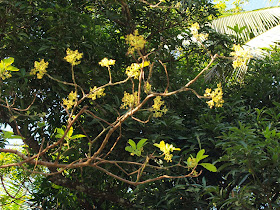More weeds in the property become more conspicuous to me because of the macro lens. I have now more things to observe and document with my camera. These plants or weeds have already been here in the property even before i was born, but i get interested on them just now! I realized not only the critters with us are so lovely, these weeds with minute flowers are spectacular too.
Urena lobata, the inflorescence is around 1.0 cm in diameter. The fruits are small thorny bulbs.
NOID, The length of the flowers are about 3-4mm.
The plant producing the above NOID blue petite flowers have lovely colors too. It is here where a lot of Dysdercus cingulatus are being hatched. I guess this is their alternative host when cotton and its relatives are not available.
Mimosa diplotricha flower
Mimosa diplotricha flower
Mimosa diplotricha seedpods, which i also see for the first time. This is very conspicuous to the naked eyes but still, thanks to the macro lens. This is a very invasive weed that grows so fast in the tropics. A field full of this weed cannot be entered by mammals because of the the thorns along its stems.
Flemingia strobilifera, or wild hops. Above photo is the green bracts that enclosed the reproductive parts. The lower photo shows the dried bracts and a seed pod abnormally out of the bracts. Most of these pods are inside those bulging bracts till the pods fully dry and open for the seeds to scatter.
Flemingia strobilifera, or wild hops. Above photo is the green bracts that enclosed the reproductive parts. The lower photo shows the dried bracts and a seed pod abnormally out of the bracts. Most of these pods are inside those bulging bracts till the pods fully dry and open for the seeds to scatter.
In many Asian countries, the plant parts are used for medicines, while modern studies showed its antimicrobial and antioxidant activities. Isoflavonoids are just some of its useful chemical contents. But in our property they are mostly weeds, unwanted species. I don't even see butterflies or bees on them, but at least i like their ornamental display.
Oxalis curniculata. This weed grows in normally wet pots of ornamental plants. They just creep and not tolerant of dry soil. Its flower is only ~1.0cm in diameter. Those pods are lovely to play with when mature, press them a bit and the scattering of seeds give subtle firecracker-ly sounds. Try it.



































